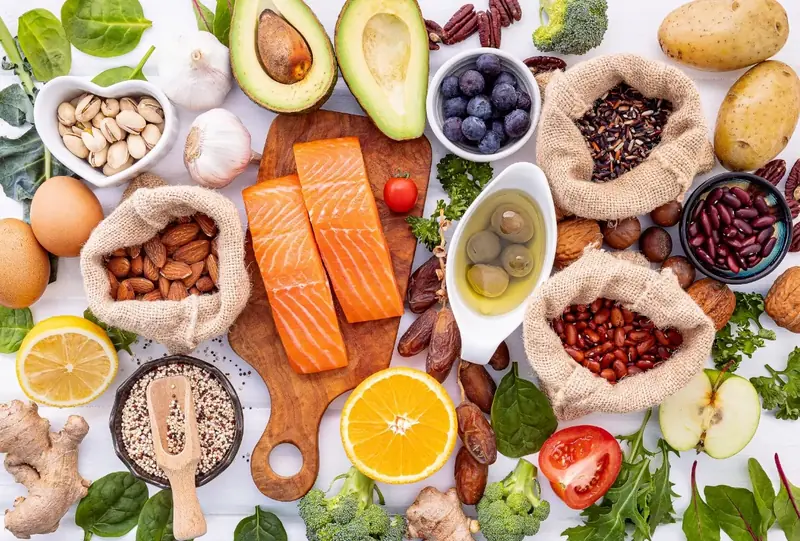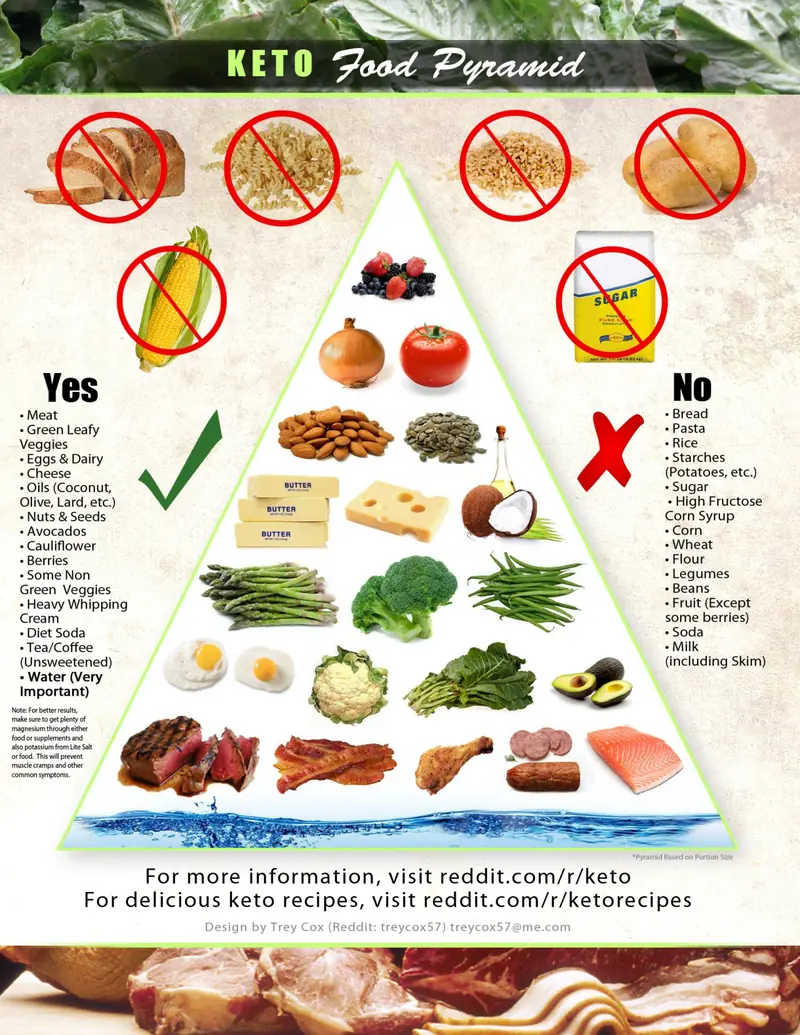
What is the mechanism behind this type of diet, are there any side effects, and what examples of a weekly menu can support health when the diet is unbalanced?
How It Works
Nutrition affects our energy levels and overall well-being, and different approaches to dietary balance influence weight management and cognitive processes. The low-carbohydrate, high-fat ketogenic diet shifts the body into a state of ketosis, where fat is used as the primary energy source instead of carbohydrates. This metabolic state promotes weight loss and helps manage certain health conditions.
The ketogenic or keto diet is based on drastically reducing carbohydrate intake—organic compounds found in food that serve as the body’s primary energy source. Carbohydrates are broken down by digestive enzymes into glucose, which fuels our vitality. The keto diet limits carbohydrate consumption to a minimum of 20-50 grams per day.
A sharp decrease in carbohydrate intake and an increase in dietary fats prompt the liver to produce ketone bodies from fatty acids. The goal of the keto diet is to transition the body into ketosis, where fat becomes the main energy source instead of glucose. The liver begins to produce ketones from fats, which serve as the primary fuel for the body and brain. This reduces appetite and stabilizes energy levels throughout the day.

The Mechanism in Detail
The alternative metabolic process known as ketosis occurs when the body, deprived of carbohydrates, is forced to extract fuel from fats, proteins, and glycogen under unfavorable conditions. Fatty acids are transformed in the liver into ketone bodies: beta-hydroxybutyrate, acetoacetate, and acetone. These substances become an alternative means of enhancing energy potential.
In an effort to maintain the necessary glucose levels for the healthy functioning of organs and systems, the body survives by actively burning fats—particularly from its own reserves. Within a few days, the “fat depot” is significantly depleted, and glycogen stores in the liver and muscles are exhausted. When cells use ketone bodies for energy, this leads to weight loss and normalizes blood sugar levels.
For the body, ketones are akin to high-quality gasoline for a car. Ketosis, as an adaptive response to the absence of carbohydrates in the diet, is considered a natural metabolic phenomenon and a normal physiological state. Its distinction from ketoacidosis (a life-threatening condition where glucose metabolism is disrupted) lies in the fact that ketosis does not produce an excess of ketone bodies; they break down, and the acid-base balance remains stable.
Types of Ketogenic Diets
As a result of carbohydrate deprivation, ketosis allows the body to cope with the lack of carbohydrate-rich plant foods by switching to animal-based products. In a classic ketogenic diet, fats account for over 90% of daily caloric intake. The standard ketogenic diet is designed with a high fat content (75%), a moderate amount of protein (20%), and a very low carbohydrate content (5%).
The high-protein ketogenic diet resembles the standard one (the same 5% carbohydrates) but includes a higher protein content (35%) at the expense of reduced fat (60%). The cyclical ketogenic diet allows for periods of high carbohydrate intake: for example, 2 days of carbohydrate loading after 5 days of dietary carbohydrate restriction. The targeted ketogenic diet is suitable for athletes, as it permits carbohydrate consumption during periods of increased physical activity.
If the VLCKD (very low carb ketogenic diet) is based on daily carbohydrate intake of less than 10% with protein limited to 1 g/kg of body weight or 1.5 g/kg for physically active individuals, the LCHF (low-carbohydrate-high-fat) diet allows for 45% fats and 30% proteins, while the Moderate-carbohydrate diet permits an average carbohydrate intake of 26-44%. In the classic ketogenic diet, the ratio of fats and proteins to carbohydrates is 4:1, 3:1, or 2:1.

What Can You Eat on Keto?
Sources of healthy fats include olive oil, coconut oil, peanut oil, and avocado (an important product for electrolyte balance that contains monounsaturated fats and potassium). Allowed components of the ketogenic diet include meat, fish, eggs, nuts, seeds, and non-starchy vegetables. For protein sources, you can consume red meat (beef, pork), poultry (chicken, turkey), and fatty fish (sardines, tuna, salmon) for heart-healthy omega-3 fatty acids.
Consumption of high-fat dairy products with low carbohydrate content is permitted: natural yogurt, cheese, sour cream, and cream, which provide calcium. For optimal results, the minimum amount of carbohydrates should come from complex compounds with long-chain sugars. Their advantages include a low glycemic index and longer-lasting satiety.
Among fruits, you can eat vegetables rich in complex carbohydrates: cabbage (both head and leafy), Brussels sprouts, broccoli, zucchini, spinach, lettuce, onions, and herbs (sources of fiber that support digestive health). Low-carbohydrate berries include blueberries, raspberries, and strawberries, which can be included in the diet in limited quantities. Nutritionists may recommend supplementing the diet with protein powders from soy, pea, and whey, as well as magnesium and calcium salts, among others.
What Not to Eat on a Keto Diet?
To initiate ketosis, it is essential to eliminate simple organic compounds from the diet: these consist of short chains that are easily absorbed by the intestines, raising blood sugar levels, increasing insulin production, and leading to weight gain. Additionally, simple carbohydrates only temporarily satisfy hunger, leading to overeating. Prohibited foods on the keto diet include starchy vegetables and high-sugar fruits, cakes and other pastries, bread, and baked goods.
You should avoid grapes, bananas, potatoes, beets, carrots, pasta, rice, and processed snacks. It is necessary to exclude sauces, sugary drinks, energy drinks, and alcohol from the diet. Despite the presence of acceptable complex carbohydrates, dishes containing lentils, peas, or beans are not used in ketogenic diets. During the ketogenic diet, you should also avoid low-fat dietary products, as many of them have added carbohydrates or sugar to enhance flavor. The listed products can disrupt ketosis, so they must be eliminated.

How Long Can You Stay on Keto?
To achieve ketosis while adhering to all conditions of the ketogenic diet, it may take at least 5-7 days. During this period, blood glucose levels should decrease, and the body will gradually transition into full ketosis. It is not advisable to rush the metabolic change; it is important to allow the body to adapt. According to various methodologies, the ketogenic diet should be followed for at least 2-3 weeks or from 4-8 weeks. However, the other extreme is also undesirable: the ketogenic diet cannot be permanent, as it does not provide dietary balance and does not supply the body with everything it needs. The maximum duration is considered to be 6-12 months.
Why the Keto Diet Can Be Harmful?
The body’s negative response to the lack of glucose as a familiar energy resource manifests as malaise, dizziness, and general weakness. Feeling unwell is usually common during the first week of dietary adjustment. Full adaptation may take up to three weeks. However, a predominance of fats and proteins in the diet can cause not only short-term reactions in the first days after changing dietary structure but also provoke long-term effects that develop over several months. Side effects of the ketogenic diet can include digestive disturbances, loss of muscle mass, calcium depletion from the body, increased risk of cardiovascular diseases, and kidney failure.
The mildest disorders include constipation, stomach heaviness, and bloating. More serious consequences of the ketogenic diet may include weakened bone health (which is particularly dangerous for the elderly and women) and muscle loss (which is undesirable for strength athletes and bodybuilders). The greatest risk associated with the ketogenic diet arises from a significant increase in blood homocysteine levels, which contributes to the development of atherosclerosis, as well as the threat of kidney diseases and the formation of kidney stones.
Contraindications for the ketogenic diet include metabolic disorders and fat metabolism issues, carnitine deficiency, gastrointestinal diseases, diabetes, liver or kidney failure, pregnancy, and breastfeeding. Possible side effects of the ketogenic diet include growth and developmental disorders in children, increased cholesterol levels, constipation, nausea, and vomiting. Since this involves a change in homeostasis, regular monitoring of blood composition and the condition of internal organs is necessary. The ketogenic diet should only be prescribed by a doctor after analyzing the risk-benefit ratio and should be conducted under medical supervision.

Benefits of the Ketogenic Diet
Proponents of this dietary system believe that the body’s hormonal response to calories is more important than the quantity of calories themselves. A low carbohydrate intake and the absence of snacking normalize insulin levels, which activates lipolysis. One of the ketone bodies (beta-hydroxybutyrate) influences the synthesis of the hunger hormone and the response of the neurotransmitter that signals satiety. Since the feeling of fullness lasts longer and occurs after consuming less food on this diet, ketosis promotes weight loss in cases of obesity.
Some experts consider this dietary regimen to be twice as effective for weight loss compared to a low-fat diet. Studies have shown that following a ketogenic diet improves the composition of gut microbiota. Additionally, counting calories is not necessary when following a ketogenic diet. Some studies provide evidence that the ketogenic diet can make type 2 diabetes reversible. Notably, the neuroprotective properties of ketogenic diets are highlighted by specialists, who point out their applicability in neurodegenerative conditions and emphasize their protective function in preventing brain aging.
The effectiveness of the ketogenic diet in fitness or sports nutrition is also being researched. It has been proven that the ketogenic diet can be most beneficial in endurance sports, such as marathons, cycling, and triathlons. By using fat as an energy source, the body conserves glycogen stores during prolonged exertion. Research continues in the area for which the ketogenic diet was originally developed: the treatment of childhood and adult epilepsy. In half of the patients using the ketogenic diet, a reduction in seizure frequency of more than 50% is noted.
A Concept from the Past
The history of the ketogenic diet confirms the saying, “Everything new is well-forgotten old.” The ketogenic or keto diet was first developed over 100 years ago—in 1921. American doctor Russell Morse Wilder from the Mayo Clinic used it to treat epilepsy in children. The invention of the anticonvulsant drug phenytoin in 1938 diminished interest in the diet, which had been recommended to patients to prevent seizure attacks.
In the 1970s, an updated version of the ketogenic diet emerged from American cardiologist Robert Atkins: the doctor prescribed his version of the keto diet specifically for weight loss, and later this dietary style was again applied to alleviate epileptic seizures and prevent type 2 diabetes. Renewed interest in the ketogenic diet occurred in the 1990s when specialized nutrition began to be reconsidered as an alternative to medication for treating epilepsy in children.

In 1994, Jim Abrahams, a Hollywood producer and founder of the Charlie Foundation, contributed to the promotion of this treatment method after his son was diagnosed with epilepsy. Funding for research on the ketogenic diet provided data showing that in every second case, drug-resistant children with epilepsy could almost completely eliminate seizures through this dietary approach over a certain period (more than a year). Those who followed the ketogenic diet for six months experienced a 90% reduction in the frequency of epileptic symptoms in one-third of cases. Thus, ketone bodies stabilize neuronal activity.
Example of a Weekly Keto Diet Plan
Before transitioning to a new type of diet, be sure to consult with a doctor!

Monday
Breakfast: avocado, scrambled eggs, tea or coffee.
Lunch: fish with a vegetable side and tea.
Dinner: vegetable salad and chicken meat.
Tuesday
- Breakfast: scrambled eggs with bacon.
- Lunch: green salad and mushrooms in sour cream.
- Dinner: cheese pancakes with sour cream or yogurt.

Wednesday
- Breakfast: milkshake, strawberries, and peanut butter.
- Lunch: salad with tuna, cabbage, and soy sauce.
- Dinner: pork ribs with cheese and vegetables.
Thursday
- Breakfast: boiled eggs and cheese.
- Lunch: vegetable salad and cream soup.
- Dinner: chicken with cream cheese and a side of fresh vegetables.

Friday
- Breakfast: unsweetened cocoa or natural yogurt.
- Lunch: beef with mushrooms and herbs.
- Dinner: salad with tuna, tomatoes, cucumbers, and spinach.
Saturday
- Breakfast: omelet with mushrooms and ham.
- Lunch: boiled chicken with leafy salad.
- Dinner: white fish with spinach and coconut oil.
Sunday
- Breakfast: scrambled eggs with ham.
- Lunch: stewed chicken with cabbage and mushrooms.
- Dinner: baked pumpkin.
We have selected a budget-friendly keto diet menu and offer dishes that are simple to prepare and comprehensively provide the body with all the necessary nutrients.
